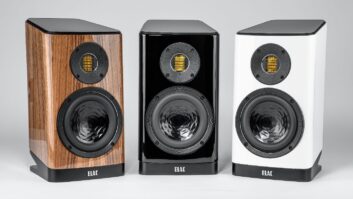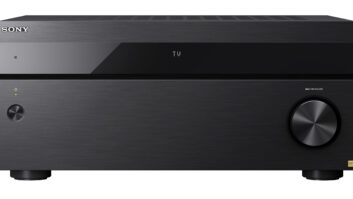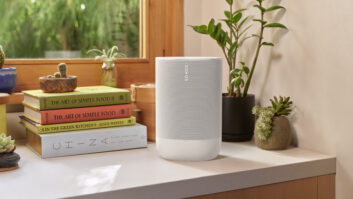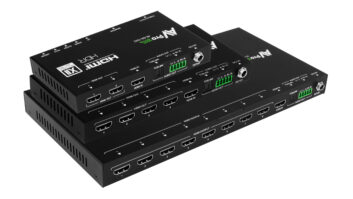In a previous blog post I wrote about how I personally lived through changes in the home technology market and how the DIY/consumer smart home market has evolved over the years. In this post I will list as many thoughts as I am aware of on the subject of DIY convergence. Some thoughts are mine, and some are from other sources as well, but the list is not exhaustive. I will not get into too much detail on each of the points as this post could get really long. Each point I believe deserves its own separate analysis.

Consumer Awareness. This is an obvious one. What better way to promote the industry than by having Apple, Google, Amazon, Philips, and others with abundant marketing power promoting home technology to the world? So far the majority of professionally installed home automation systems have been mostly for the wealthy—some say only for the “one percent” who can afford them. But, who are we kidding? We would all love to see it being adopted by the masses, and this is what the big companies entering the space are trying to do. Have we reached the peak of the DIY market, where it’s dominated by early adopters? That would mean it’s time for the mass market to take over. More thorough research is needed before we can answer that question.
Professional Home Tech Manufacturers. Not many traditional home automation manufacturers are considering the DIY segment. Savant most recently dipped a toe into the DIY market, releasing its Savant Remote, but we are yet to see if it’s a successful move or not. Their goal is to get DIYers hungry for more home technology, then eventually call a home tech pro.
A company that is successfully producing affordable products and targeting both DIYers and home tech pros is Fibaro. Mostly known in Europe, their goal is to create a solution available for everyone, so their prices are quite reasonable and the quality is top-notch.
A well-known manufacturer that entered the DIY space early is Lutron with its Caséta line. Lutron has been known throughout the years to be leading the market with innovations in lighting controls, always making the right moves.
What about Philips and their Hue line of smart bulbs? Home tech pros surely know that Philips has been active in our space for years before the Hue, with its Dynalite lighting control systems.
So should traditional home automation manufacturers start making products to compete with the new and very popular DIY products? Given their history, vast experience, and know-how, I believe they can come up with much better stuff than the current players to aim at mass market, and surely with better margins for integrators.
DIY/IoT Device Manufacturers. It has become obvious recently that these manufacturers want to develop relationships with home tech pros in one way or another. Amazon opening up integration with the Echo to Control4 and others, Sonos finally releasing an API (sort of), and tons of smaller companies with their own booths at CEDIA.
Is there any reason why they shouldn’t? For years, home tech pros have been doing what these companies are trying to do, and their vast experience will definitely benefit them. However, they should think more about what benefits they can provide to home tech pros with these lower budget products, perhaps with better margins and more disruptive business models.
Another important point is the reliability and actual ease of installation/configuration of these DIY products. Currently the majority of people opting for them are tech geeks who love gadgets—in other words, early adopters. The majority of people who purchase DIY products go for point solutions like Sonos and connected cameras. Clearly the simplicity and reliability of more integrated smart home systems that talk to each other is just not there yet. Let’s see how the Apple HomeKit does when it matures a bit more.
CEDIA. More and more DIY manufacturers are exhibiting at CEDIA every year. My friend Jason Griffing has already written a post titled, CEDIA is Wise to Embrace the DIY Convergence, with many interesting points.
CEDIA is, of course, welcoming DIY manufacturers to its trade show with their own booths, but are preferring the term DIFM, which means “do it for me.” According to Vin Bruno, CEDIA CEO, on the Home Tech Podcast says, “CEDIA members have to embrace all technology,” and “people want a professional in their house to help them with all technology.”
CEDIA should then get more actively involved in bridging the gap between the DIY and integrators in this middle market. So far, their only active role is allowing DIY products at their trade show. Perhaps they could also develop some training courses, educating home tech pros on how to counter-sell DIY products, or how to use these products for making profit.
Home Tech Pros. Currently most home tech pros are dismissing the idea of adding DIY devices in their product lines, and I cannot blame them as these products are not geared toward the integrator, but aiming directly to the consumer market. This is something that the DIY manufacturers themselves should address, as mentioned previously.
Whatever the argument, when companies like Apple and Google are entering the space, you simply cannot ignore it. Some even say that the brand recognition of Nest/Google helps close deals. Nest, for example, has created a brand name recognized even by the mass market. Installing a Nest thermostat is definitely not a DIY job, so being listed as a registered Nest Pro on their website can drive traffic to you, eventually closing more deals on additional systems.
One idea being tried out by a few companies is for integrators to provide DIY smart home products as a service to the more cost conscious consumer at the low end of the market. There are many companies already adopting DIY devices, trying out different business models. Some of the companies doing this are Uxari, Comtronics, and Enjoy. Of course, time will tell if these models are truly viable in the long term.
Another idea for traditional, more local integration companies is to have a technician or a small team dedicated just for the low end market. They would do all the selling, installing, and configuring of these products on their own. When tech savvy owners are doing it, surely a couple of good technicians can do a much better job at it. Again, this would require better margins; otherwise it might not be worth the trouble. But it could be a start toward new business models driving wider adoption of home technologies. There are already small local companies doing just that, dismissing the high-end market completely.
Integrators are already having inquiries from perspective clients asking about Nest, Philips Hue, Apple HomeKit, and others that they see in the press every day. If an integrator, focusing purely on the mid to high-end market, does not want to get involved with these products, they must definitely know what these solutions can do, or not do. How else could they counter sell their services? Ideally they would have even tried them as well to experience their limitations first hand.
So should professional integrators start to embrace consumer IoT and the DIY smart home? As Vin Bruno said, home tech pros should be looking at all home technology, trying to make it work for them in one way or another. And I believe all factors mentioned above should work together in the long term, to somehow bridge this middle gap of professional home technology and DIY.
Thank you for taking the time to read this. I would love to hear more ideas from fellow integrators, and manufacturers, so please comment below.






